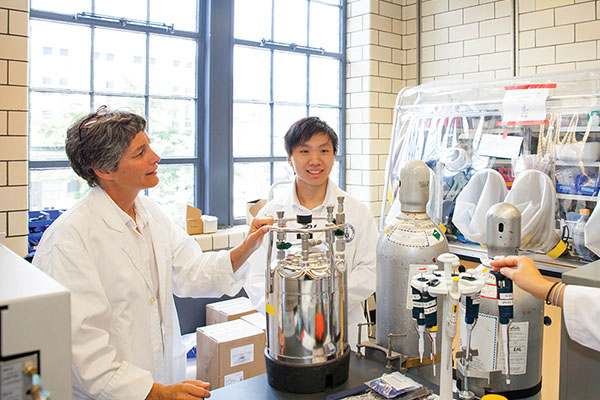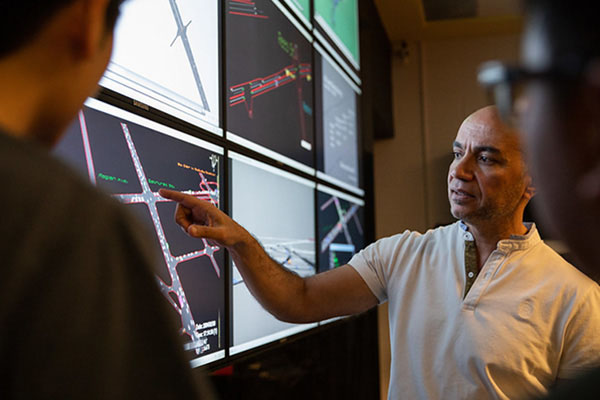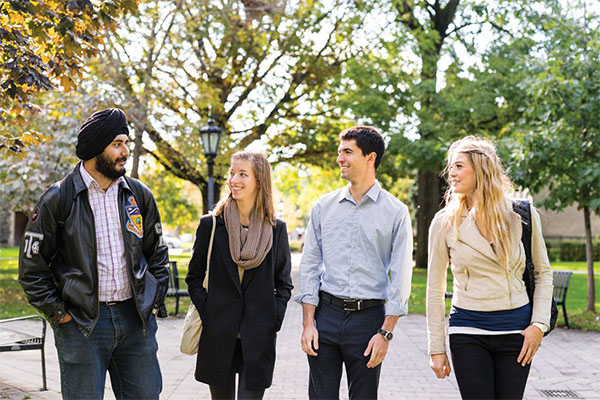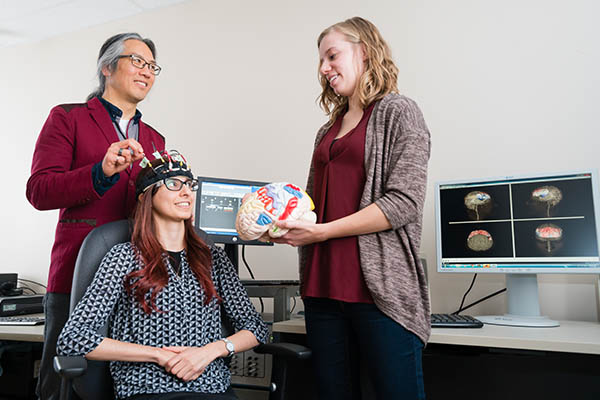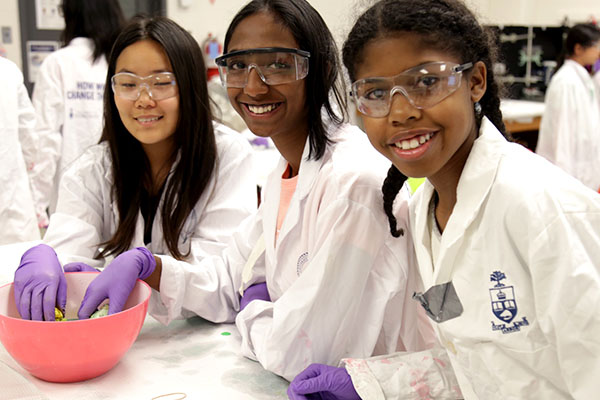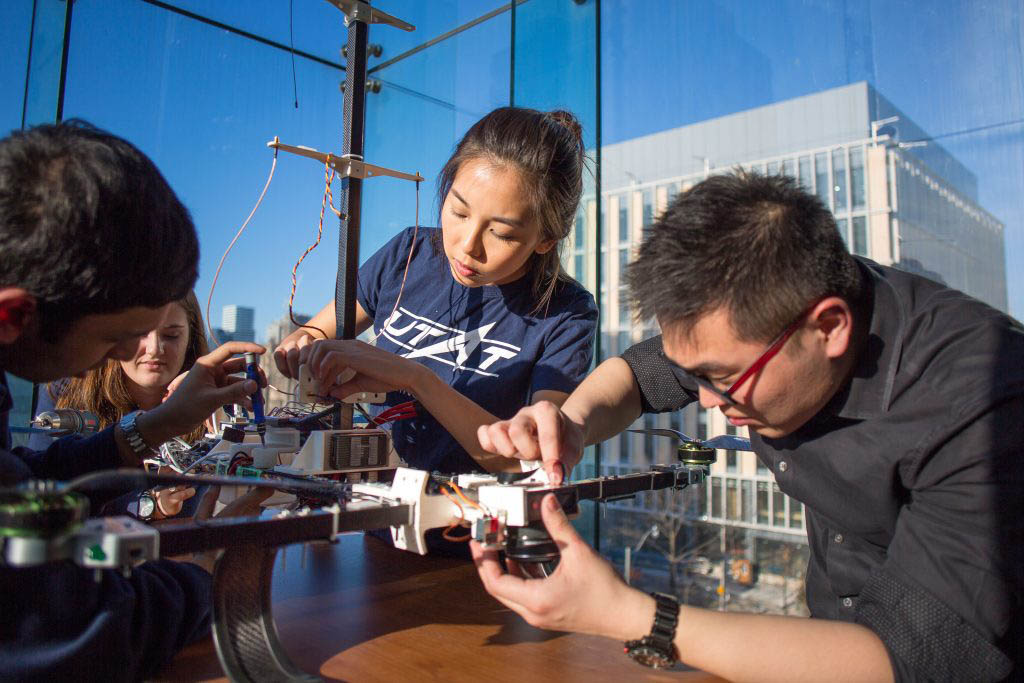The FASE Research Office is pleased to announce the recipients of the 2023-2025 Joint EMHSeed & XSeed Funding Program.
Initiated in 2015, the Joint Seed Program is an interdivisional research funding program designed to promote multi-disciplinary research and catalyze new innovative partnerships between researchers from the Faculty of Applied Science and Engineering and those from outside of Engineering. The recipients for this year will undertake unique and innovative research initiatives ranging from surgical micro-robots to equitable healthcare and medical imaging.
XSeed Winners
1. Constructing the Human Olfactory System Ex Vivo
Co-Applicants: Michael Garton (BME) & Ting Li (Astronomy and Astrophysics)
This research partnership will develop the first portable device that encapsulates the entire human olfactory system on a microfluidic chip. It will be integrated with a bio-machine interface that allows smell to be encoded electronically. These fluorescent-intensity channels can be connected to an artificial neural network with a multitude of potential applications, including, diagnosing Parkinson’s disease using smell.
2. Evaluating the Risk of Nanomedicines on Brain Function Using the Zebrafish Model
Co-Applicants: Kai Huang (MSE) & Qian Lin (Cell and Systems Biology)
Nanomedicine has emerged as a promising tool for the treatment of various diseases, including cancer and neurodegenerative diseases, yet the potential risks of these medicines on brain function remain poorly understood. This project will investigate the impact of nanomedicines on brain function using the zebrafish model. The results will provide valuable insights into the impact of nanomedicines on brain function and inform the development of safe nanomedicines for the treatment of neurological diseases.
3. The Open Quantum MOF Database
Co-Applicants: Mohamad Moosavi (ChemE) & Anatole von-Lilienfeld (Chemistry)
Metal-organic frameworks (MOFs) are porous crystalline materials with high chemical tunability that show promising performance for a wide range of sustainability applications, including carbon capture and hydrogen storage. However, the accuracy and success of these methods are tied to the availability of data. MOF properties have been computed using inexpensive, low-accuracy methods. This project aims to dramatically expand the range of available materials’ properties and enhance the accuracy of available data. This database will then be made publicly available through the Open Quantum MOF Database. This effort aims to enable AI-guided design and discovery of MOFs for a wide range of applications in the future.
4. Pose Estimation and Control of Surgical Micro-Robots with Optical Coherence Tomography
Co-Applicants: Eric Diller (MIE) & Lueder A. Kahrs (Math and Computational Sciences)
This project will advance surgical robots by bringing together two methodologies: magnetically actuated surgical microrobots and micrometre-resolution medical imaging for microrobot tracking. Optical coherence tomography (OCT) is a unique medical imaging method that has potential to detect not only surgical microrobot surfaces but can also image subcutaneous tissue for guided procedures, such as targeting small-scale anatomy for needle-based drug delivery. These novel magnetic microsurgical robots enable dexterous manipulations inside tortuous channels of a patient’s brain.
5. Normal Blindness: Why Do Drivers Miss Other Road Users Even Though They Are Looking, and What Can We Do About It?
Co-Applicants: Birsen Donmez (MIE) & Benjamin Wolfe (Psychology)
Understanding why drivers miss other road users even when they should have seen them, how understanding these failures can improve traffic safety, and what it means for our understanding of the mechanisms of perception and cognition is inherently interdisciplinary. This project will tackle this problem from both human factors engineering and cognitive psychology perspectives significantly advancing both fields, laying the groundwork for real-world interventions, and improving road safety for all road users.
6. Mechanical Stimulus-Triggered Controlled Release of RNA Nanoparticles from Implantable Polymeric Depots for Localized Treatments
Co-Applicants: Omar Khan (BME) & Helen Tran (Chemistry)
Movement-related chronic immunological conditions that cause inflammation and tissue degradation are an on-going and incurable condition often treated orally through medication, which is not as targeted or effective. This project combines anti-inflammatory mRNA nanoparticles and stimuli-responsive polymers to create injectable nanoparticle depots that treat inflammation directly in the joint.
7. Towards Home Monitoring of Heart Failure Patients Via Robust and Unbiased Spatial Frequency Domain Imaging
Co-Applicants: Ofer Levi (BME) & David Lindell (Computer Science)
Structured light imaging is a powerful tool but fails to account for differences in skin pigmentation, resulting in a significant bias for darker-skinned patients. Among the relevant techniques, spatial frequency domain imaging (SFDI) has become popular. This project addresses these limitations by developing a differentiable, end-to-end model of light transport in structured light imaging systems. Combining this model with machine learning techniques will allow learning illumination patterns to minimize reconstruction error. This model will capture variations in skin pigmentation vs. tissue depth, mitigating bias in reconstruction accuracy. This will significantly improve the quantitative accuracy and equity of SDFI systems, resulting in a viable tool for non-contact evaluation of tissue oxygenation and physiology changes in heart patients.
8. Regulating the AI Lifecycle: A Multidisciplinary Perspective
Co-Applicants: Shurui Zhou (ECE) & Boris Babic (Philosophy and Statistical Sciences)
This project hopes to gain a better understanding of how to design the needed regulatory infrastructure for machine learning-based medical products through empirical and field experiments with industry partners and qualitative studies with a broad range of stakeholders developing medical machine learning products. This will shed insight on future research directions in this interdisciplinary area of medical AI regulation.
EMHSeed Winners
1. Engineering Excellence and Equity in Prehospital Trauma Care
Co-Applicants: Timothy Chan (MIE), Brodie Nolan and Johannes von Vopelius-Feldt (Emergency Medicine / Unity Health Toronto)
Prehospital critical care teams can provide trauma bay level care at the scene of major trauma, with potentially life-saving effects. These teams are well established in the UK and many European countries but do not exist in North American cities. This project will be the first to examine the feasibility and cost-effectiveness of a prehospital critical care team response to major trauma in North America.
2. Multivalent Display of Human CD47 Peptides on DNA Nanostructures for Therapeutic Targeting of Tumor-Associated Macrophages in Human Sarcoma
Co-Applicants: Leo Chou (BME) & Kim Tsoi (Surgery / Sinai Health)
Soft tissue sarcomas are a rare type of aggressive cancer with few systemic options and mortality rates remain high. The CD47-SIRPa axis is a mechanism used by many sarcoma tumours to evade phagocytosis by macrophages, but it has not been therapeutically targeted in this disease. This study will develop and test a novel peptide-DNA nanoparticle to block SIRPa on macrophages and enhance the destruction of sarcoma cells. This project aims to introduce new therapeutics for an orphan cancer whose patients are in desperate need of improved care.
3. Equitable Usability Evaluation of Digital Health Technologies and Devices
Co-Applicants: Enid Montague (MIE) & Joe Cafazzo (Institute of Health Policy Management and Evaluation / University Health Network)
Digital tools and devices can support patients in their homes and reduce physician workload, but poor usability of these tools can increase medical errors, workload and stress. Little attention has been given to equity, diversity, and inclusion in usability methodologies. This collaboration aims to identify equity failures in current usability methodologies and develop new approaches to usability evaluation that facilitate the inclusion of marginalized users that are at risk of disparities in health care.
4. In Silico Hemodynamics and Biomechanics of Pulmonary Vein Stenosis Initiation and Progression
Co-Applicants: Cristina Amon (MIE) & Rachel Vanderlaan (Cardiovascular Surgery / Hospital for Sick Children)
Pulmonary vein stenosis (PVS) is a progressive, pediatric disease associated with high mortality. It is characterized by narrowing of the blood vessels that transport oxygenated blood from the lungs to the heart. This project will use patient-specific clinical data to build computational models that provide insights into the mechanical and hemodynamic environment within stenotic pulmonary veins. The relationship between mechanical parameters and PVS pathogenesis will then be evaluated, paving the way for future research of effective treatment options.
5. Quantitative Live Imaging of Human Heart Organogenesis
Co-Applicants: Rodrigo Fernandez-Gonzalez (MIE) & Stephanie Protze (Department of Molecular Genetics / University Health Network)
Congenital heart disease (CHD) is the leading cause of birth defect-related deaths worldwide, with the cause of CHD unknown in many cases. This project will establish a novel human pluripotent stem cell-based model to recapitulate early events of human heart development in 3D allowing researchers to test genetic variants and understand the cellular and molecular mechanisms of CHD. This will establish quantitative microscopy tools using live imaging and machine-learning approaches to analyze the cellular dynamics of the developing human heart.
The Engineering Vice Dean Research Office, along with our partner faculties and institutions, would like to congratulate the research teams on their success.




